Why goat meat is set to be the next big food trend: it's not just tasty, it's ethical, too
The UK is one of the only countries in the world that doesn't commonly eat goat's meat. But that's set to change, as Lizzie Rivera finds out. Gourmet goat meat is being served at meat festival Meatopia this weekend, and it could soon be coming to a supermarket near you. Here’s how to cook it when it does…
Your support helps us to tell the story
From reproductive rights to climate change to Big Tech, The Independent is on the ground when the story is developing. Whether it's investigating the financials of Elon Musk's pro-Trump PAC or producing our latest documentary, 'The A Word', which shines a light on the American women fighting for reproductive rights, we know how important it is to parse out the facts from the messaging.
At such a critical moment in US history, we need reporters on the ground. Your donation allows us to keep sending journalists to speak to both sides of the story.
The Independent is trusted by Americans across the entire political spectrum. And unlike many other quality news outlets, we choose not to lock Americans out of our reporting and analysis with paywalls. We believe quality journalism should be available to everyone, paid for by those who can afford it.
Your support makes all the difference.When you think of goat meat, fragrant Jamaican curries, like the ones served up from colourful street stalls at the Notting Hill Carnival last weekend, or an exotic Moroccan tagine typically come to mind.
But did you know that shoulder joints melt like butter when slow-roasted, leg steaks are tender in casseroles and chops are particularly succulent after being cooked on a summer BBQ? Goat meat also makes for delicious garlicky Merguez sausages à la France, but more of that later...
Goat meat makes up 60 per cent of red meat worldwide, but the UK is one of the few places in the world where it’s not commonly eaten. That is slowly changing. Goat meat, kid, is in fashion. It’s even available to buy from Ocado, and will soon be on supermarket shelves.
Why goat meat should be the next dish you serve up, I kid you not…
Former River Cottage chef, James Whetlor is one of the pioneers of the goat meat revolution. Founded in 2012, his company, Cabrito (Spanish for 'young goat') rears and sells upwards of 10,000 kids a year – which would otherwise be culled just after birth as a by-product of the dairy industry – to seasonal and highly-regarded restaurants such as St John and Quo Vadis in London and Romy’s Kitchen in Bristol.
“In today’s world it’s becoming less and less acceptable to have waste at this scale,” he says. “All farmers have wanted to find a solution and having been a chef and working at River Cottage, I was in unique position to provide it.”
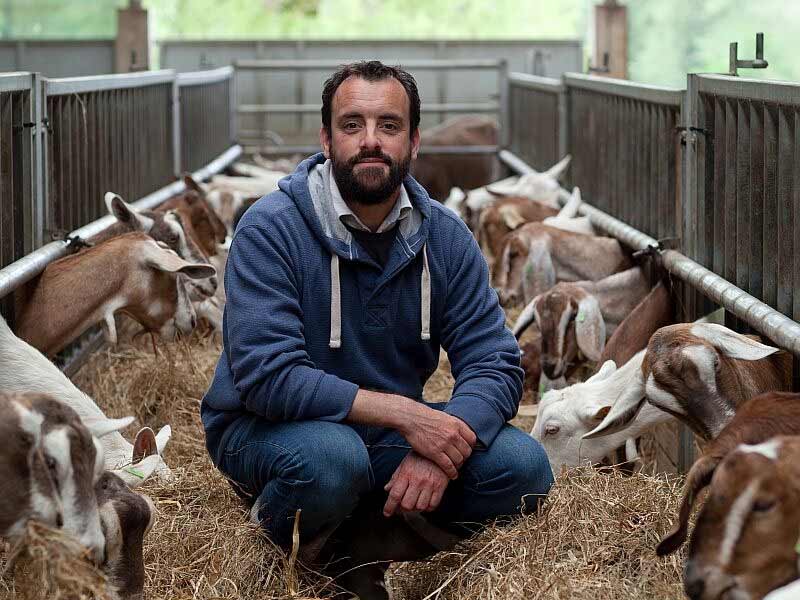
There’s about another 40,000 male billy goats in the dairy system that are still being senselessly wasted because as a nation we love goats cheese and goats milk, but don’t eat kid. However, James has to grow demand alongside supply, which is not the easiest of jobs, especially when you’re asking people to try something new that is comparable in price to organic lamb.
Cabrito’s goats are largely reared indoors, and on powdered milk – such is the nature of the dairy industry. But James insists they are well treated. “I haven’t bought one goat from a farm I haven’t personally visited,” he says.
For those that consume goat dairy products, the question of what to do with non-milk producing billies is a complex ethical issue, and one that bears thinking about.
Having friends like Jamie Oliver and Hugh Fernley Whittingstall helps to raise awareness, and demand for goat meat is growing.
But you can’t sell food on ethics alone and goat meat has a bit of a tough rep – probably because we associate it with seven-year-old nannies who are used for meat once they no longer provide enough milk.
But seven-month-old kid is very different. Low in fat, it’s also high in protein and iron. Taste wise it’s somewhere between lamb and venison, with a slightly more substantial texture. “It tastes brilliant,” says James. “A big advantage is that because it’s eaten by many cultures there’s so many recipes for what you can do with it.”
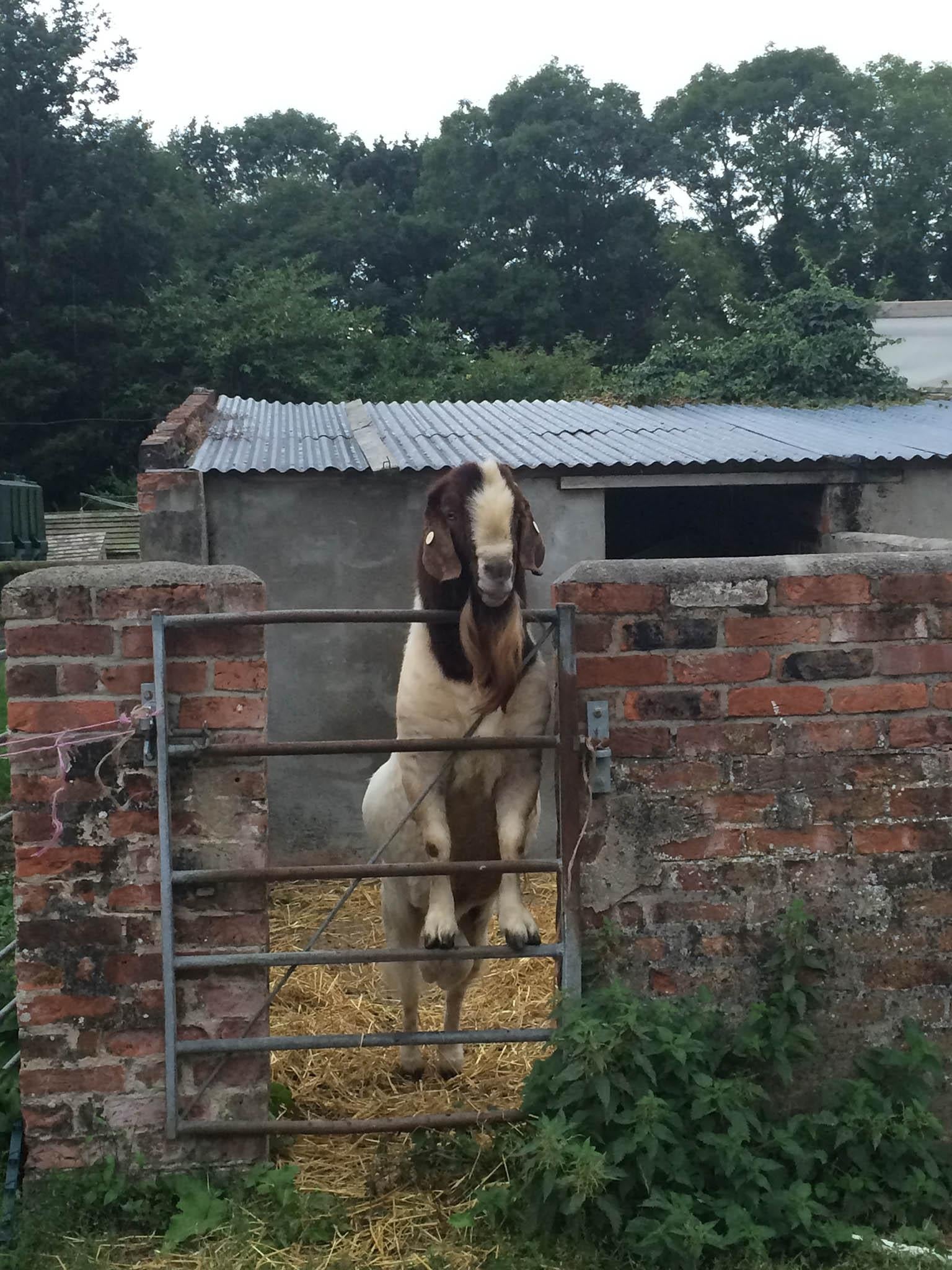
Last year, Michelin-starred chef Matt Gillan won BBC’s Great British Menu with his goat meat main course. Titled “Teaching and Preaching” it was a masterclass in how to use the whole goat, which included slow-cooked goat shoulder, goat ragu, herders pies and goat cheese.
This weekend, Yotam Ottolenghi is cooking whole spiced goat at London’s ultimate meat-fest Meatopia, where Duck & Waffle are also serving pulled Goat Cuban Sandwiches with Gruyère, spicy mojo and pickles.
Organic goat meat
Curious goat meat eaters can buy from the UK’s only organic supplier, Bere Marsh Farm in Dorset. I visited owner Fiona Gérardin and her herd of Boer goats last week, for Organic September.
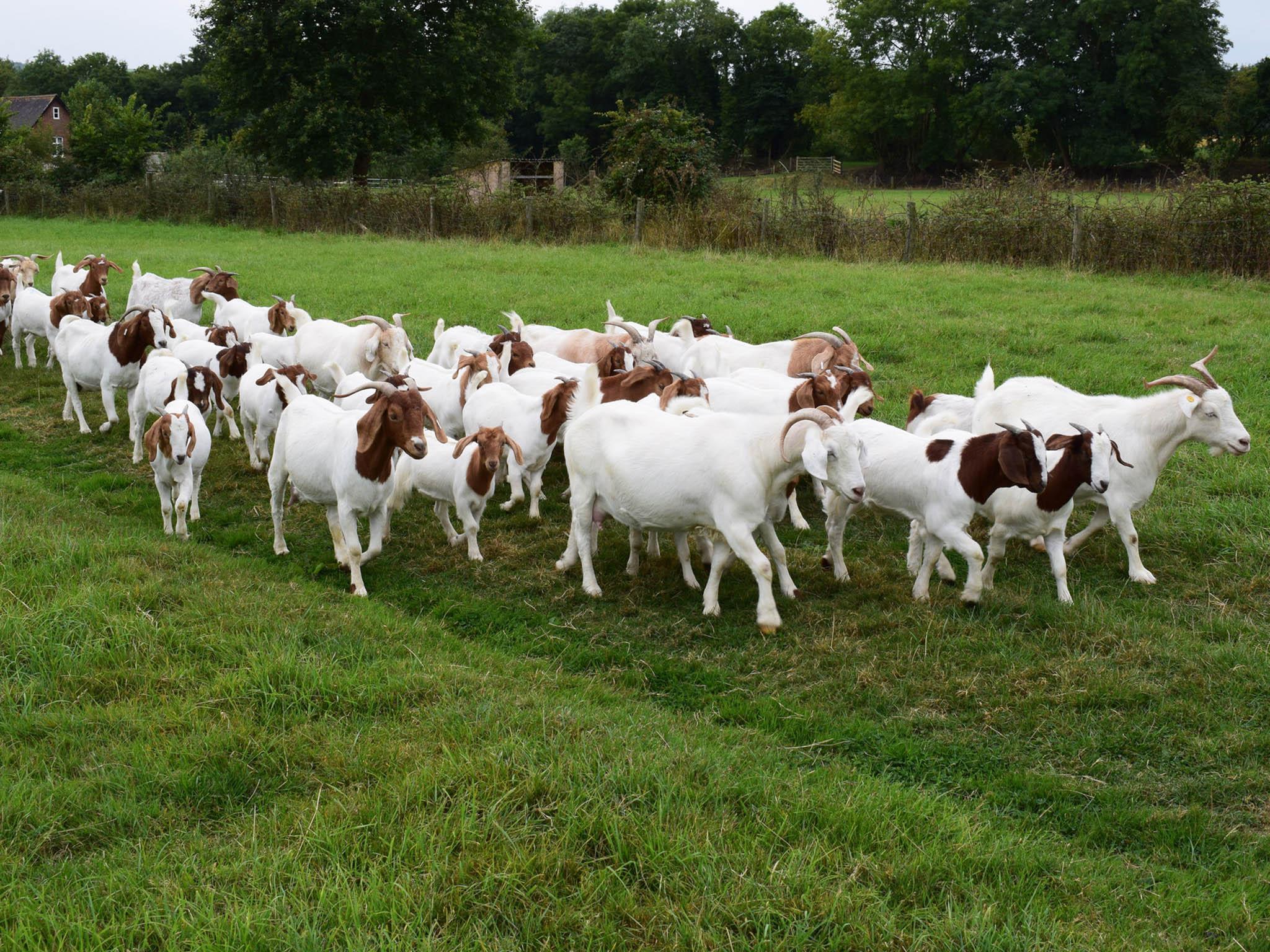
Fiona set up with three goats in 2010 on her old family farm, choosing to rear goats because nobody else in the area knew anything about them and she didn’t want people leaning over the fence telling her “this is how you should do it”. She chose Boer goats because they are meatier. She says, “they have bigger bums and are stockier and shorter than traditional dairy goats”.
Six years later, and Fiona’s billy goat Topknot Rooney gets to mingle with the thirty nanny goats he’s normally kept separate from, for two weeks starting from the 30 September. They will give birth to upwards of 60 kids between them by March. “He’s quite sexy”, she says proudly.
Animal welfare is top priority, the newborns are milked and weaned naturally by their mothers, sleeping all together in a barn at night and let out to graze by about 9:30am every day – they refuse to get up before then. “They are quite precious,” Fiona explains. “They also don’t particularly like wet feet, or loads of mud.”
Social and curious, they are a joy to watch. They’re also great for keeping the hedges in line but not so good for trees – which they love to feast on, climb up and occasionally get stuck in. Last week one of the herd almost slipped in the river, and Fiona’s French musician husband, JP (pronounced ‘Gi-pe’) had to feed her down the bank with rope to pull him out.
From about six months old they’re fat enough to eat. “For the first first few years, we gave them names and bottle-fed the kids that needed it, so sending them to the abattoir was terrifying,” says Fiona. “But they’ve had really good lives and it’s important to me that they’re well looked after up to the last.”
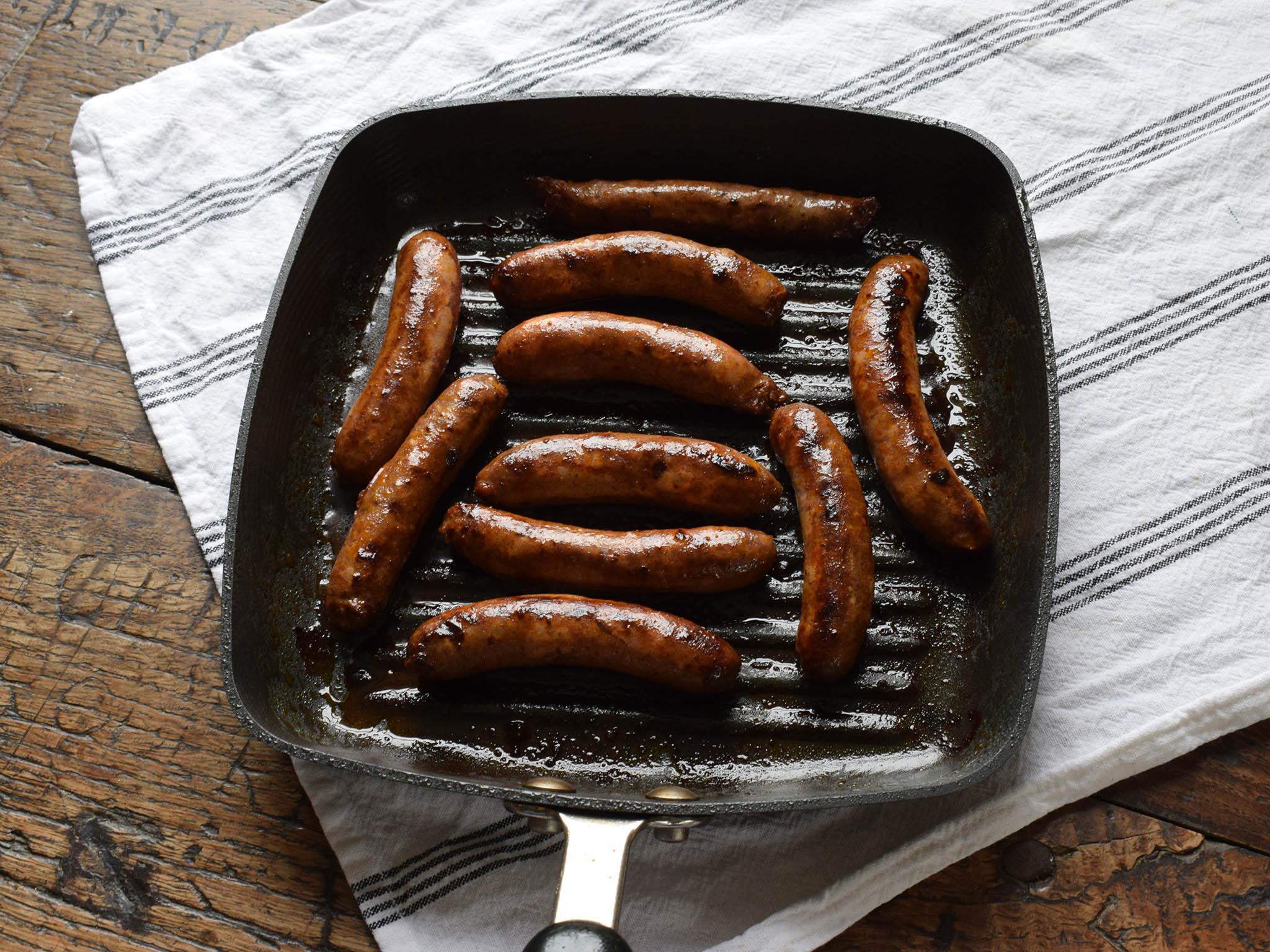
The meat sold on their website is butchered to order. Alternatively, you can visit the farm in Shillingstone and buy it from Fiona’s Farm House Window, open on Saturdays from 10am – 2pm from September to December – or until they sell out – which they do every year.
Soon, you’ll even be able to buy the delicious Merguez sausages that JP cooked us on the Aga while we sheltered from an hour-long storm in the kitchen. He has only just perfected the recipe for after years of trying, and he almost gave up.
Fortunately he didn’t. Unfortunately, they are keeping that one a closely guarded secret. “It’s like a family recipe, very special,” he says. “I had to work it out myself and couldn’t get any tips from butchers or friends. Now I’m playing the game.”
You can however, try these tasty recipes…
Goat and broad bean pilaf with seasoned yoghurt by Tom Hunt
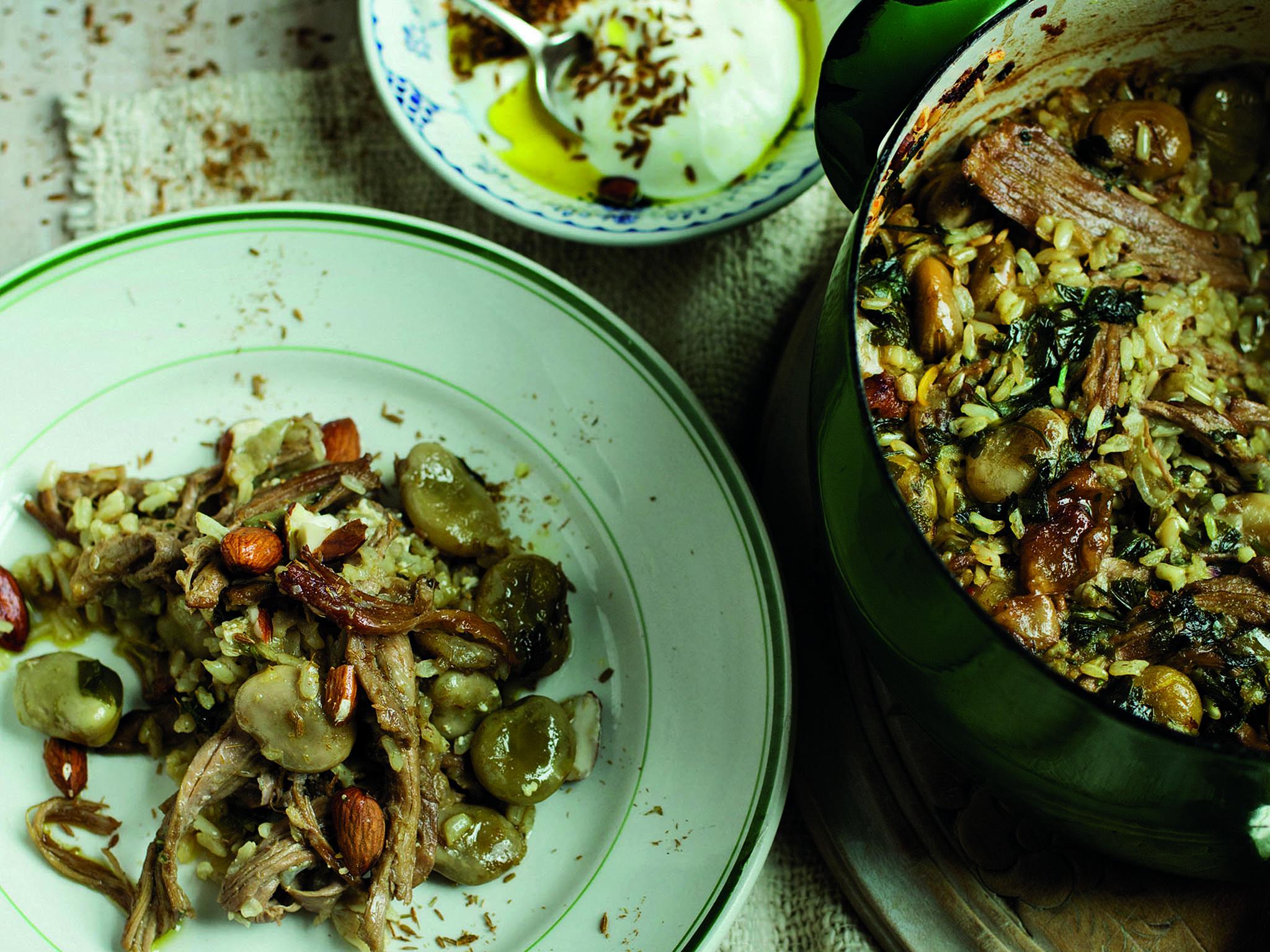
Pilaf is a delicious and aromatic Middle Eastern dish made of rice cooked in a rich broth of onions and spices. It works brilliantly with the richness of goat meat. It is in the same family as an Indian pilau or biryani.
Serves 4
Olive oil
200g goat leg or shoulder, diced
150g wholegrain basmati
2 onions, sliced
450ml water
1 tablespoon ground coriander
1 clove garlic, roughly chopped
500g broad beans podded
Small piece of cinnamon bark
Yoghurt to serve
1/2 lemon cut into wedges
3 mint leaves
Preheat the oven to 160C. Sear the diced goat meat in a hot pan with olive oil and salt for 10 minutes or until browned on all sides. Meanwhile in an ovenproof dish, gently fry the sliced onions in olive oil for 15-20 minutes until they are soft and caramelized. Then add the coriander, garlic, broad beans and cinnamon and fry for a further 2 minutes. Finally add the rice and stir, coating each and every grain with oil, onion and spice.
Add the goat meat and water to the rice, bring to the boil, then reduce the heat. Taste and adjust the seasoning as required. Put the lid on and put in the oven for 45 minutes until the water has evaporated. Serve with yoghurt, torn mint leaves and lemon wedges.
Storage: Pilaf will keep really well for 4 days. It’s delicious cold the next day or reheated. Make sure its properly refrigerated and piping hot right through when reheated.
The Natural Cook by Tom Hunt (Quadrille £20) Photography: Laura Edwards
Kid Kofte by Cabrito
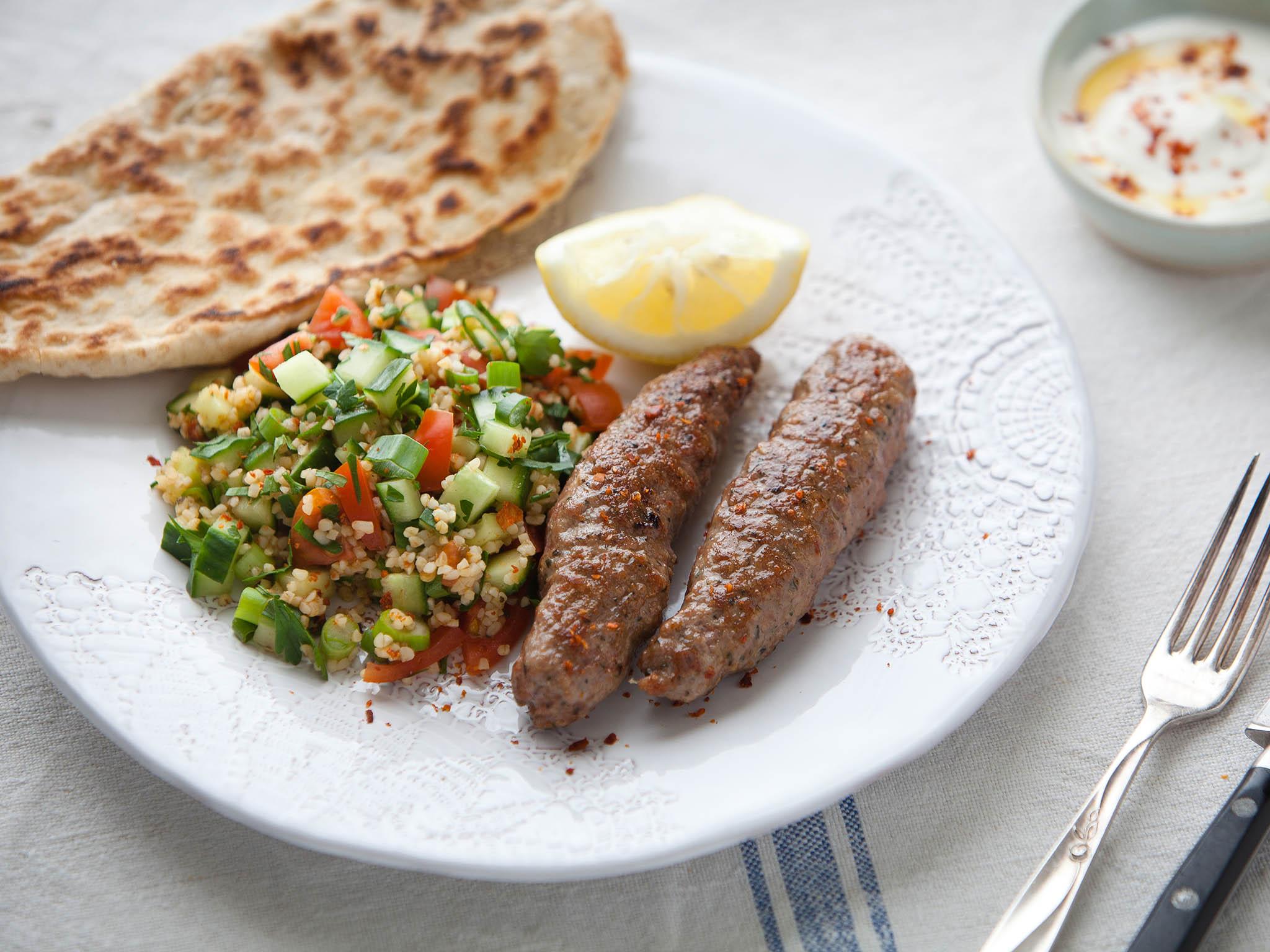
750g minced kid
50g dried apricots, finely chopped
1 onion, finely chopped
2 cloves garlic, crushed
1 small bunch parsley, finely chopped
1 small bunch mint, leaves finely chopped
1 tsp ground coriander
1 tsp ground cumin
Pinch of ground cinnamon
Mix the kid mince in large bowl with the onion, garlic, spices and herbs and season well with salt and pepper. Using wet hands shape the mixture into cigar shapes or onto flat skewers and leave to firm up in the fridge for at least an hour. Cook on the bbq or grill until golden brown and cooked to your liking. Serve immediately with lemon wedges, red onion and parsley salad, flatbreads and garlic yoghurt sauce
Lizzie is the author of London’s ethical food website, bicbim.co.uk and worked with the Soil Association. Follow her on Twitter @LizzieRivs and @bicbim.

Join our commenting forum
Join thought-provoking conversations, follow other Independent readers and see their replies
Comments